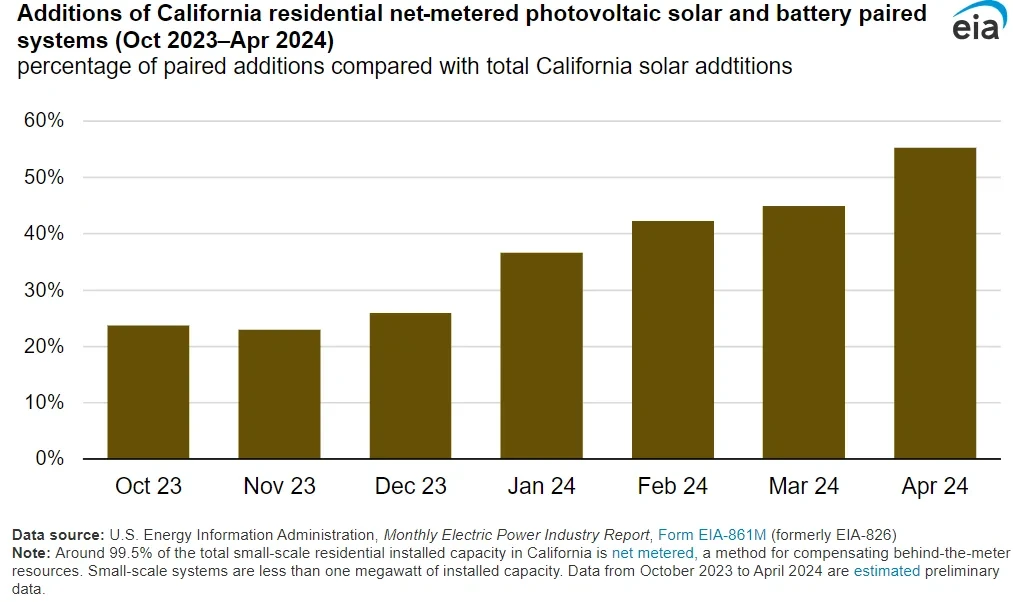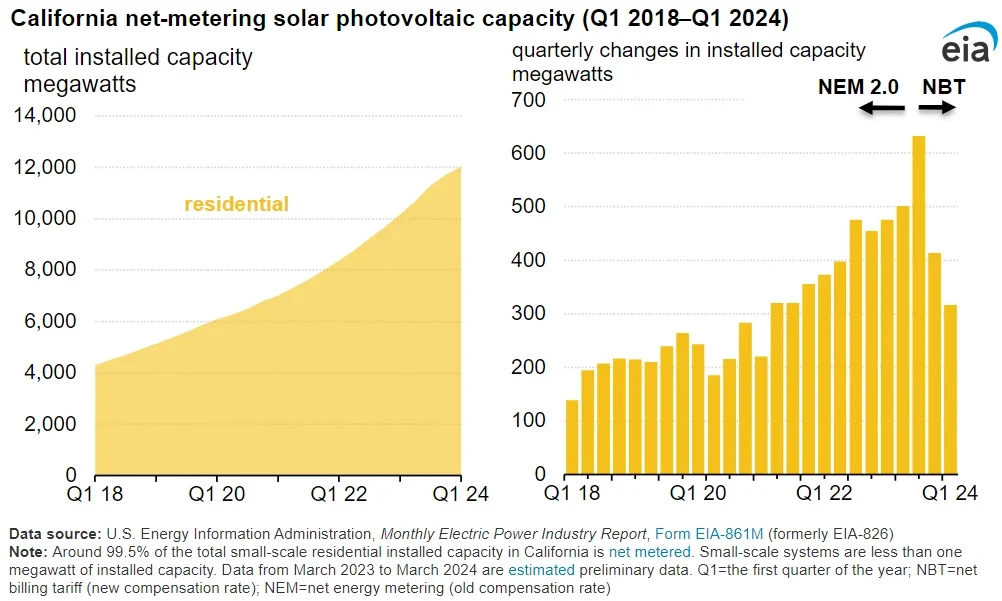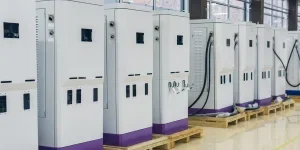Falling battery costs, shifting regulations and interest in energy independence are driving increased battery attachment rates on residential solar projects in California.

The U.S. Energy Information Administration reported in its monthly electric power industry report that battery adoption rates are rising among solar customers in California.
In October 2023, about 20% of California solar shoppers opted to include a battery energy storage system in their installation. In April 2024, that number has climbed to over 50%.
The change to battery-included systems is largely due to the transition to Net Energy Metering 3.0, a regulatory structure that decreased the amount paid to customers for sending solar production directly to the grid. Due to an hourly mismatch of peak solar production and peak electricity demand, regulators shifted compensation rates to place an emphasis on storing and dispatching solar-generated electricity when it is needed the most.
A 50% or greater battery attachment rate is a significant change for the state’s solar industry. Solar-plus-battery systems make up about 9% of all installed residential net metering capacity in California. Over 40,000 new systems were added between October 2023 and April 2024, accounting for 232 MW of new battery storage capacity in the state, said EIA.
While NEM 3.0 achieved its intended effect of encouraging more battery installations, the rulemaking decision was unpopular with solar advocates. The change increased the overall sticker price for installing solar, and while you get the added benefit of battery backup during outages, the amount of time it will take to breakeven on a solar investment in California has increased. This has led to a decline in installations, with Q1 2024 having the lowest installed capacity in a quarter since 2021 with a little over 300 MW of solar installed.

California now has more than 12,000 MW of installed solar capacity in residential net metering systems smaller than 1 MW. Residential installations account for more than 70% of installed net metering capacity, and about one-third of total installed solar capacity in the state.
“Our data show that during the third quarter of 2023, 83,376 new residential net metering photovoltaic systems were installed, compared with 70,152 systems connected under the old NEM 2.0 rule during the same period in 2022. However, we cannot differentiate the systems that requested to be grandfathered to NEM 2.0,” said EIA.
The first quarter of 2024 saw an additional 46,631 systems installed. Since January 2022, an average of 21,000 solar systems were added every month.
This content is protected by copyright and may not be reused. If you want to cooperate with us and would like to reuse some of our content, please contact: editors@pv-magazine.com.
Source from pv magazine
Disclaimer: The information set forth above is provided by pv-magazine.com independently of Alibaba.com. Alibaba.com makes no representation and warranties as to the quality and reliability of the seller and products. Alibaba.com expressly disclaims any liability for breaches pertaining to the copyright of content.




